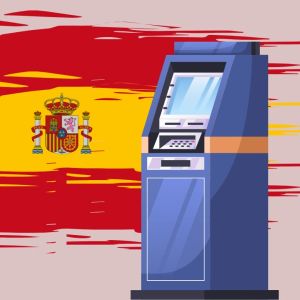
Banking services relying on electricity, such as credit card payments and ATM withdrawals, have been largely restored in Spain after an unprecedented power outage this week that may cost the EU nation’s economy over €1.5 billion. The colossal blackout, which paralyzed most of the Iberian Peninsula this week, including Portugal, caused chaos and spurred demand for cash as paper money suddenly became the only means of payment that many businesses could accept. Spain restores banking and payment operations after blackout Electronic payments, including by bank cards at point-of-sale (POS) terminals, and automated teller machine (ATM) services are once again available to residents of Spain and Portugal, the two European countries hit by a massive power outage on Monday. Wholesale and retail payments are “functioning regularly,” the Bank of Spain announced on Tuesday. The brief update on the current state of the kingdom’s payment infrastructures and banking sector came after Spain restored power supply in full. The monetary authority highlighted the “full recovery in almost all major shopping centres” many of which lost access to electronic means of payment during the blackout, alongside other retailers and service providers in the region. Operations at credit institutions are “running normally,” the regulator added while admitting that glitches were still being reported at some bank branches and ATM locations. Banco de España also said it has normalized cash distribution from its branch offices. Iberpay, the private operator of Spain’s National Electronic Clearing System (SNCE), posted on its website that “the Spanish retail payment system, the Spanish cash distribution system, and the sectoral information services are all operating normally.” Spain’s power grid operator, Red Eléctrica, took to X earlier to inform consumers it has restored nearly 100% of electricity supply on the peninsula. All transmission substations are back in operation, the company said in another post. Actualizamos información⬇️11:15h. ✅Normalizado el funcionamiento del sistema eléctrico peninsular. ✅Tras superar la punta de demanda de la mañana a las 8.35 con 28.677MW, el pico nocturno se espera a las 21:10h con 31.200 MW. — Red Eléctrica (@RedElectricaREE) April 29, 2025 Nevertheless, the declared state of emergency remained in place in affected areas in both Spain and Portugal on Tuesday. “This has never happened before,” Spanish Prime Minister Pedro Sánchez stated in an address to the nation the previous evening. Sánchez indicated Madrid had no conclusive information on the causes of the blackout, but Red Eléctrica ruled out a cyberattack. According to its director, Eduardo Prieto, the crisis may have been triggered by “strong oscillation in the electrical network” throwing the system out of balance. Blackout highlights importance of cash after withdrawals and card payments went offline The power outage, the largest in the region’s history, left millions of people in Spain , Portugal and parts of Southern France with disrupted access to basic services. The sudden interruption in electric supply hit important infrastructure, including public transport systems and healthcare institutions. Spain’s economic losses are expected to reach 0.1% of GDP, or €1.6 billion euros ($1.82 billion), according to a Reuters report quoting Confederación Española de Organizaciones Empresariales (CEOE), the country’s main business lobby organization. Digital payment systems were particularly affected, leading to significantly limited options to pay with bank cards or through mobile apps. Bank branches were closed down and ATMs shut down, making withdrawals impossible in many cases. “Nunca llevo efectivo, pero después de lo que pasó, he venido a sacar cien euros para tenerlos en casa por si las moscas”. Después del apagón, los bancos han vuelto a operar con normalidad, aunque el temor lleva a varios usuarios a hacer reservas de dinero https://t.co/rCbczEe3qu — EL PAÍS (@el_pais) April 29, 2025 Many shops chose to close doors during the crisis while in those that remained open, cash payments prevailed, the Spanish daily El País wrote , quoting Spaniards feeling lucky for keeping the habit of having some banknotes in their wallets. Not all who wanted to buy water, food or batteries had the cash. In recent years, the government in Madrid has been trying to reduce cash usage as part of efforts to curb tax evasion. Since 2021, Spanish businesses are allowed to receive only up to €1,000 in cash per transaction. The threshold previously stood at €2,500, Politico noted in an article. According to the European Central Bank, cash is still quite popular in Spain, accounting for 57% of retail transactions while at the same time offline payments through bank cards and mobile applications are yet to reach 40%. Cryptopolitan Academy: Want to grow your money in 2025? Learn how to do it with DeFi in our upcoming webclass. Save Your Spot


